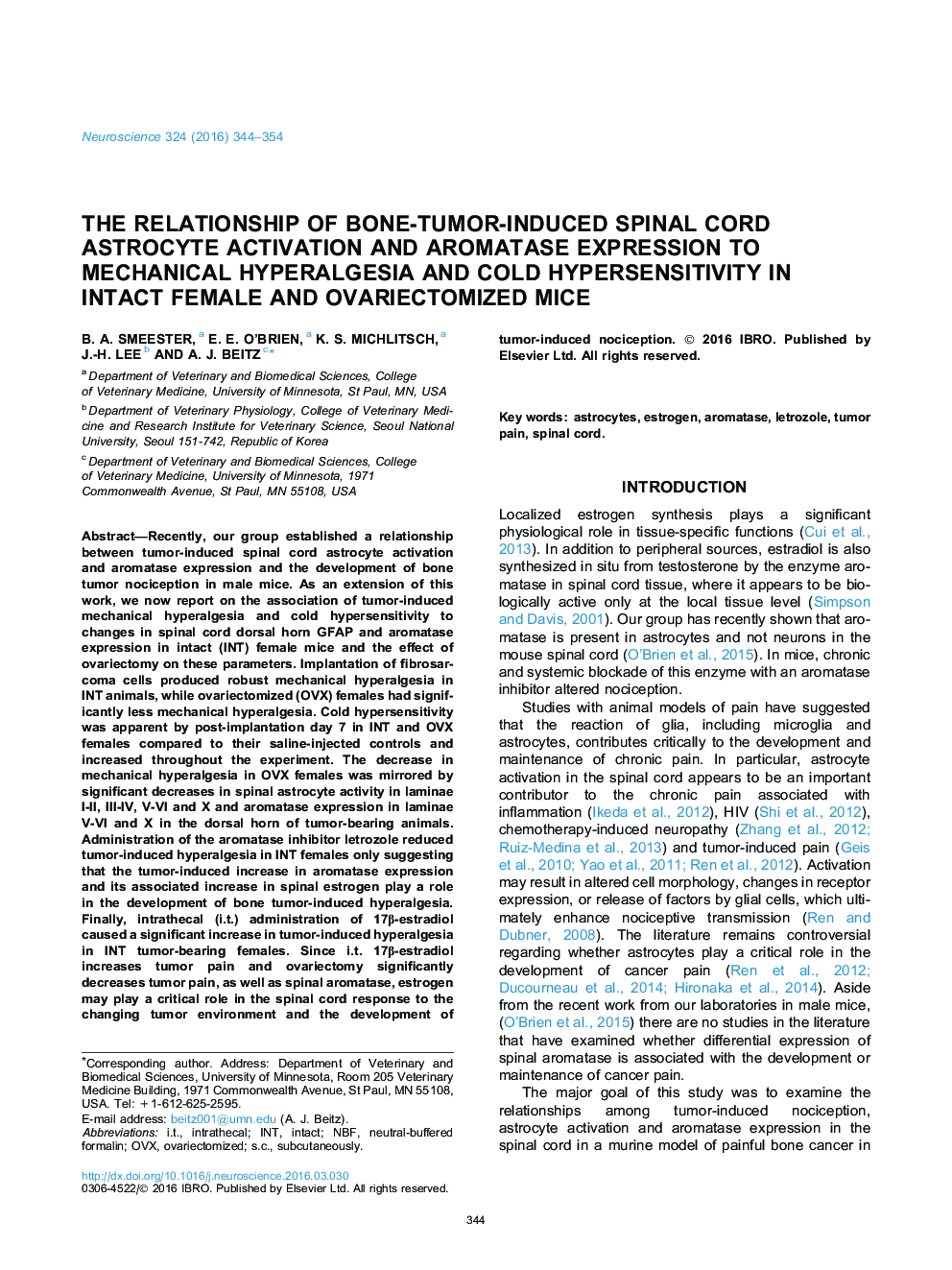| کد مقاله | کد نشریه | سال انتشار | مقاله انگلیسی | نسخه تمام متن |
|---|---|---|---|---|
| 4337333 | 1614752 | 2016 | 11 صفحه PDF | دانلود رایگان |
• Tumor pain is associated with increases in spinal astrocyte activity and aromatase expression in female mice.
• Ovariectomy decreases tumor nociception, spinal astrocyte activity and aromatase expression.
• Administration of an aromatase inhibitor reduces tumor-induced hyperalgesia, while estradiol increases tumor hyperalgesia.
Recently, our group established a relationship between tumor-induced spinal cord astrocyte activation and aromatase expression and the development of bone tumor nociception in male mice. As an extension of this work, we now report on the association of tumor-induced mechanical hyperalgesia and cold hypersensitivity to changes in spinal cord dorsal horn GFAP and aromatase expression in intact (INT) female mice and the effect of ovariectomy on these parameters. Implantation of fibrosarcoma cells produced robust mechanical hyperalgesia in INT animals, while ovariectomized (OVX) females had significantly less mechanical hyperalgesia. Cold hypersensitivity was apparent by post-implantation day 7 in INT and OVX females compared to their saline-injected controls and increased throughout the experiment. The decrease in mechanical hyperalgesia in OVX females was mirrored by significant decreases in spinal astrocyte activity in laminae I-II, III-IV, V-VI and X and aromatase expression in laminae V-VI and X in the dorsal horn of tumor-bearing animals. Administration of the aromatase inhibitor letrozole reduced tumor-induced hyperalgesia in INT females only suggesting that the tumor-induced increase in aromatase expression and its associated increase in spinal estrogen play a role in the development of bone tumor-induced hyperalgesia. Finally, intrathecal (i.t.) administration of 17β-estradiol caused a significant increase in tumor-induced hyperalgesia in INT tumor-bearing females. Since i.t. 17β-estradiol increases tumor pain and ovariectomy significantly decreases tumor pain, as well as spinal aromatase, estrogen may play a critical role in the spinal cord response to the changing tumor environment and the development of tumor-induced nociception.
Journal: Neuroscience - Volume 324, 2 June 2016, Pages 344–354
